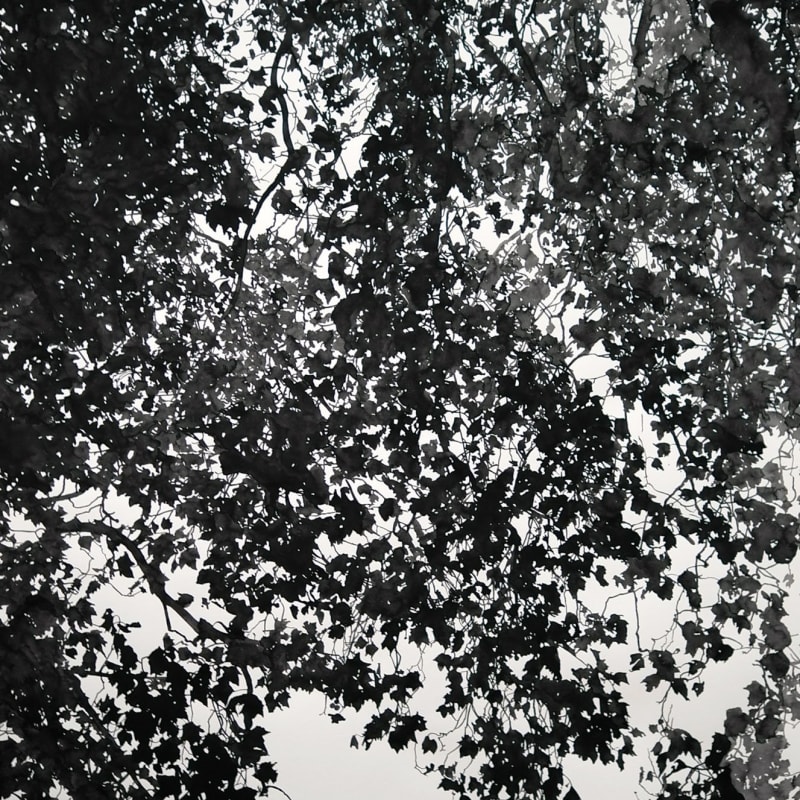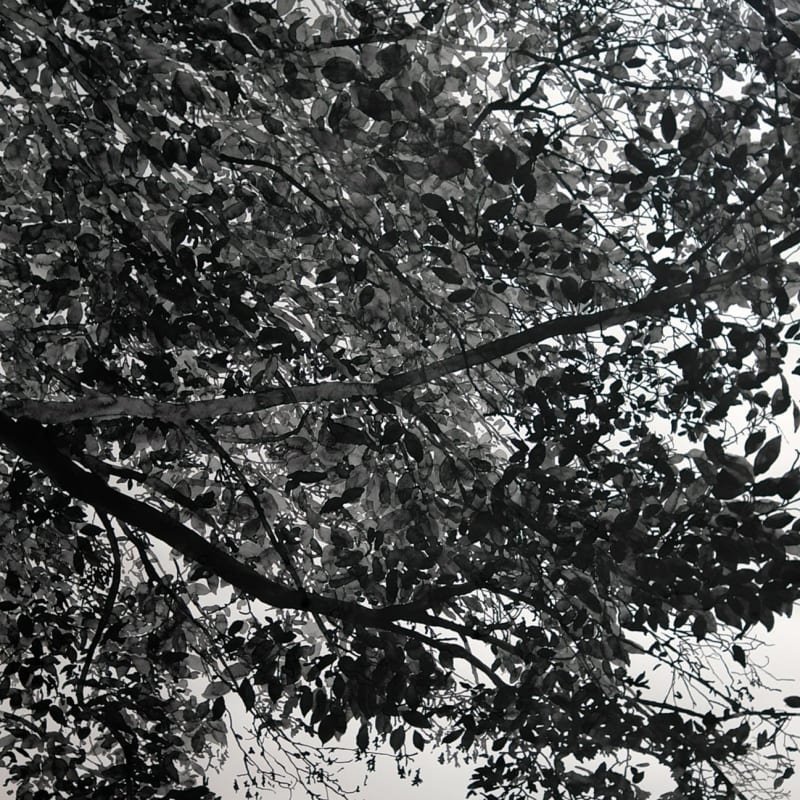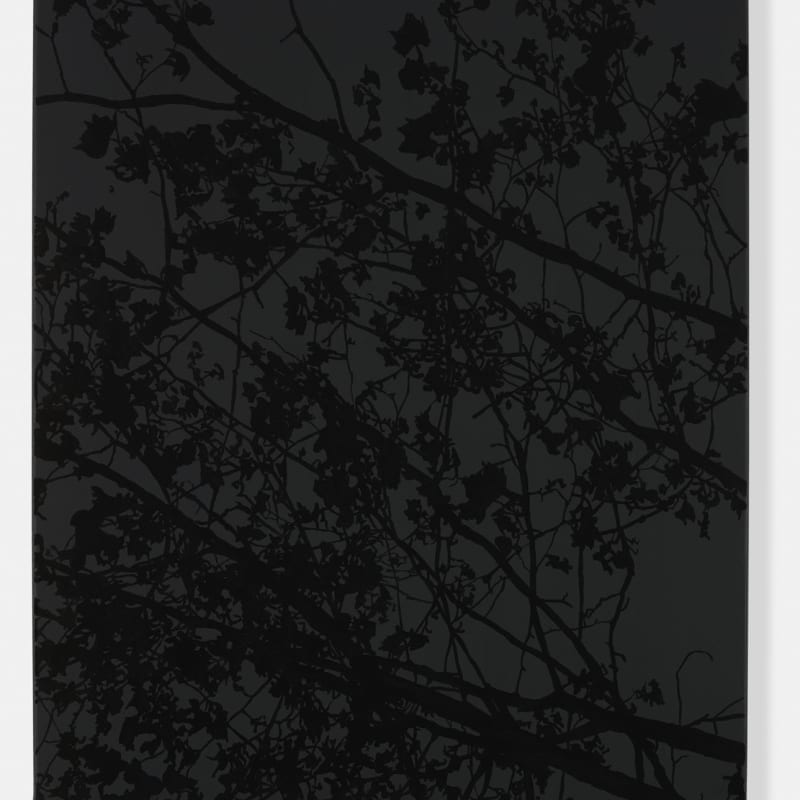Sue Arrowsmith - Studio Show
Silhouettes of interlocking branches arch across white ground; watercolour leaves ebb and flow on large sheets of paper. A willow's weeping branches; canopies of leaves; dense foliage with the colour drained out, the fleshiness of leaf and branch suppressed. Are we looking up or out, across or down?
Sue Arrowsmith photographs the trees and flora of the English landscape - on Kent walks, in Peckham Rye park - and follows a long tradition of artists who work directly from the landscape. And yet she is anything but a landscape painter. Her drawings and paintings, while underpinned by natural observation, are rooted in the formal qualities of abstraction. What does it take to make a line, a form? How do these forms interact on the surface? How does their presence in our world alter over time?
Sue Arrowsmith's work needs time. Hours are embedded in each drawing as every leaf or twig is meticulously formed over weeks; days roll over the surfaces of the finished works, affecting their moods. Morning sunlight catches the gloss paint of her black on black paintings, lifting the pattern of twigs off the matt ground; leaf-shaped pools of mottled watercolour dry as sunlight slowly scrolls across her studio. Time has long been important in her practice. Her early focus on line, warp and weft - repeated almost infinitely across large canvases - has matured into working from more figurative sources, but the same focus is required to complete them. The same physical processes are governed by the reach of her arm, the bend in her back; the limits of her mental stamina as delicate fingers of paint slowly stretch over the paper.
There is a fluidity to her finished works. The scale of her subject matter is often ambiguous, and our own orientation questioned. We can register the leaves, the branches, but simultaneously we are seduced by the patterns they form across the paper, or - in the case of the black-on-black works - that seem to hover above the canvas. The painted branches becomes lines, stretching across the ground; the watercolour leaves fuse together and move in and out of focus, both suggesting depth and simultaneously pinning our eyes to the surface. The underlying tension between the figurative source and abstract treatment, between the time embedded in each work's production and the time we need to look, between the layers of scale and orientation present in each one, ensures her work continues to beguile us, to draw us back to its surfaces as summer turns to winter, as the dawn breaks and the light fades.
Charlotte Mullins 2013





